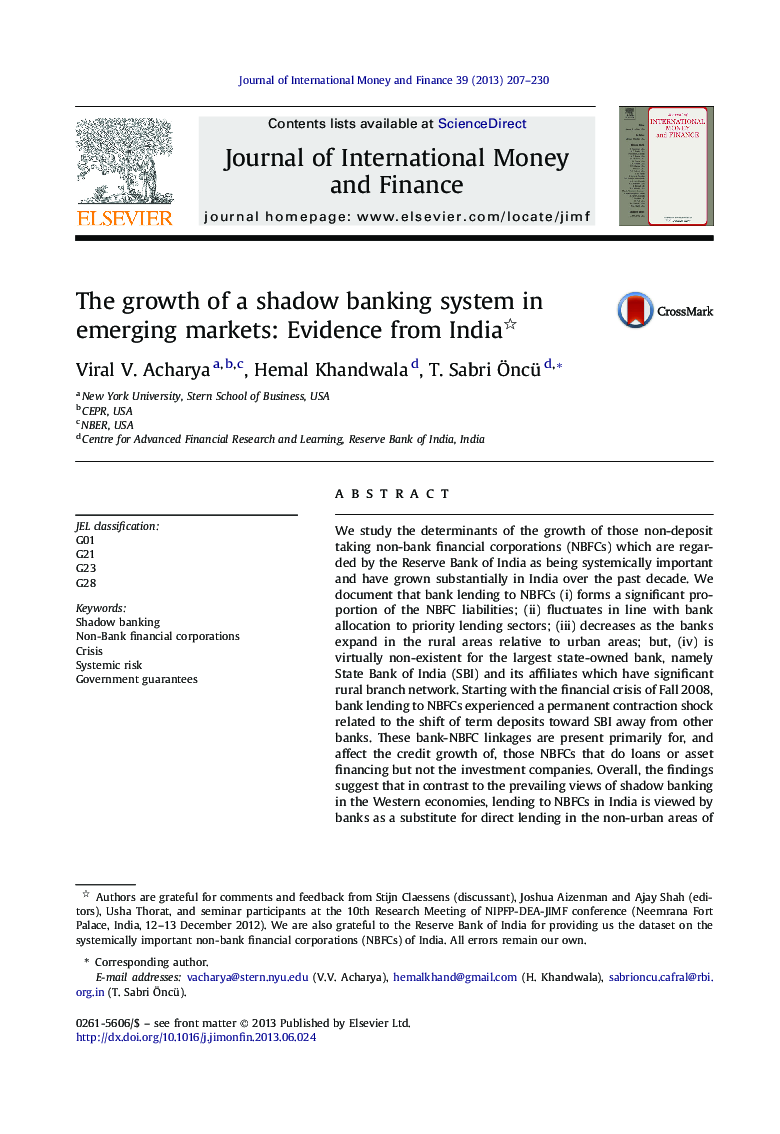| Article ID | Journal | Published Year | Pages | File Type |
|---|---|---|---|---|
| 7365937 | Journal of International Money and Finance | 2013 | 24 Pages |
Abstract
We study the determinants of the growth of those non-deposit taking non-bank financial corporations (NBFCs) which are regarded by the Reserve Bank of India as being systemically important and have grown substantially in India over the past decade. We document that bank lending to NBFCs (i) forms a significant proportion of the NBFC liabilities; (ii) fluctuates in line with bank allocation to priority lending sectors; (iii) decreases as the banks expand in the rural areas relative to urban areas; but, (iv) is virtually non-existent for the largest state-owned bank, namely State Bank of India (SBI) and its affiliates which have significant rural branch network. Starting with the financial crisis of Fall 2008, bank lending to NBFCs experienced a permanent contraction shock related to the shift of term deposits toward SBI away from other banks. These bank-NBFC linkages are present primarily for, and affect the credit growth of, those NBFCs that do loans or asset financing but not the investment companies. Overall, the findings suggest that in contrast to the prevailing views of shadow banking in the Western economies, lending to NBFCs in India is viewed by banks as a substitute for direct lending in the non-urban areas of the Indian economy, but this substitution is constrained by distortions in bank deposit flows due to the perceived differential government support of different banking groups.
Related Topics
Social Sciences and Humanities
Economics, Econometrics and Finance
Economics and Econometrics
Authors
Viral V. Acharya, Hemal Khandwala, T. Sabri Ãncü,
